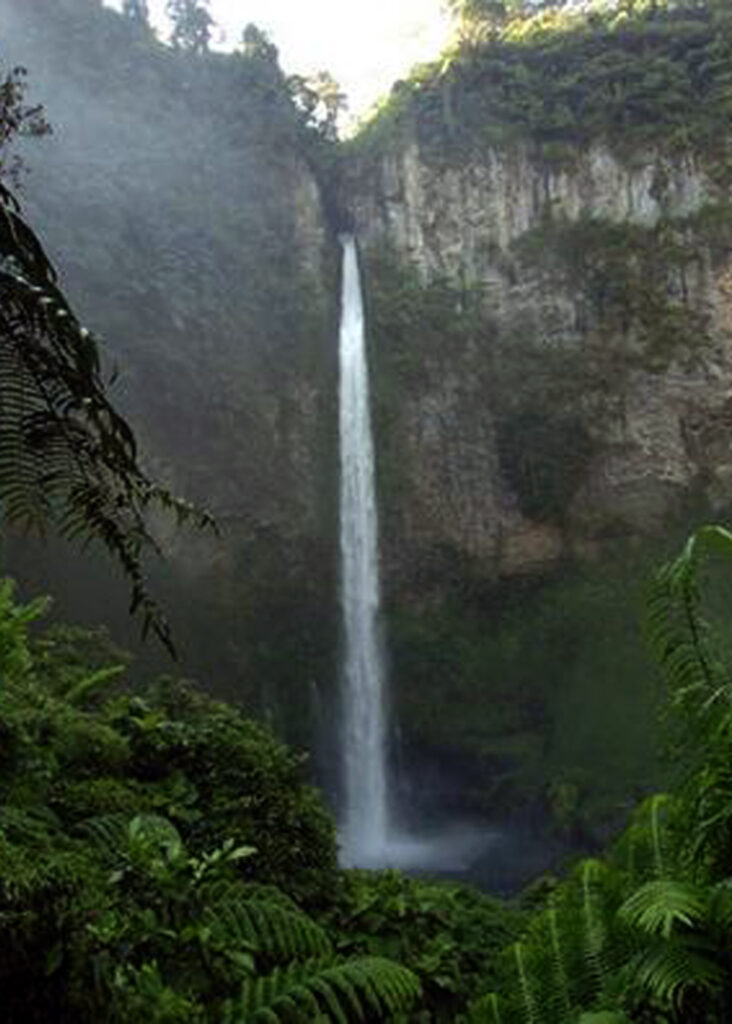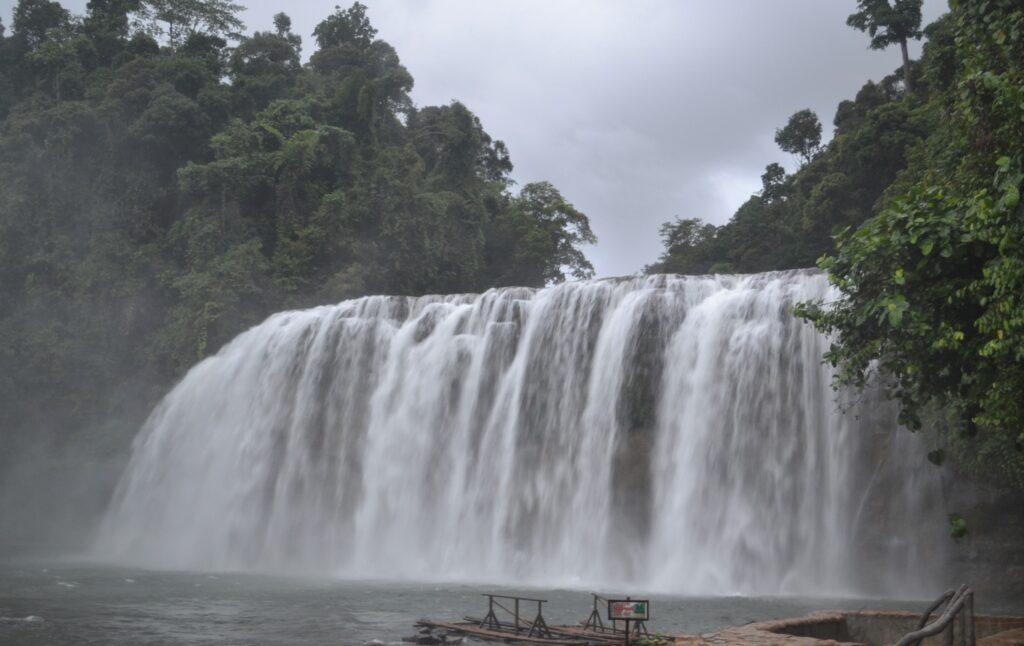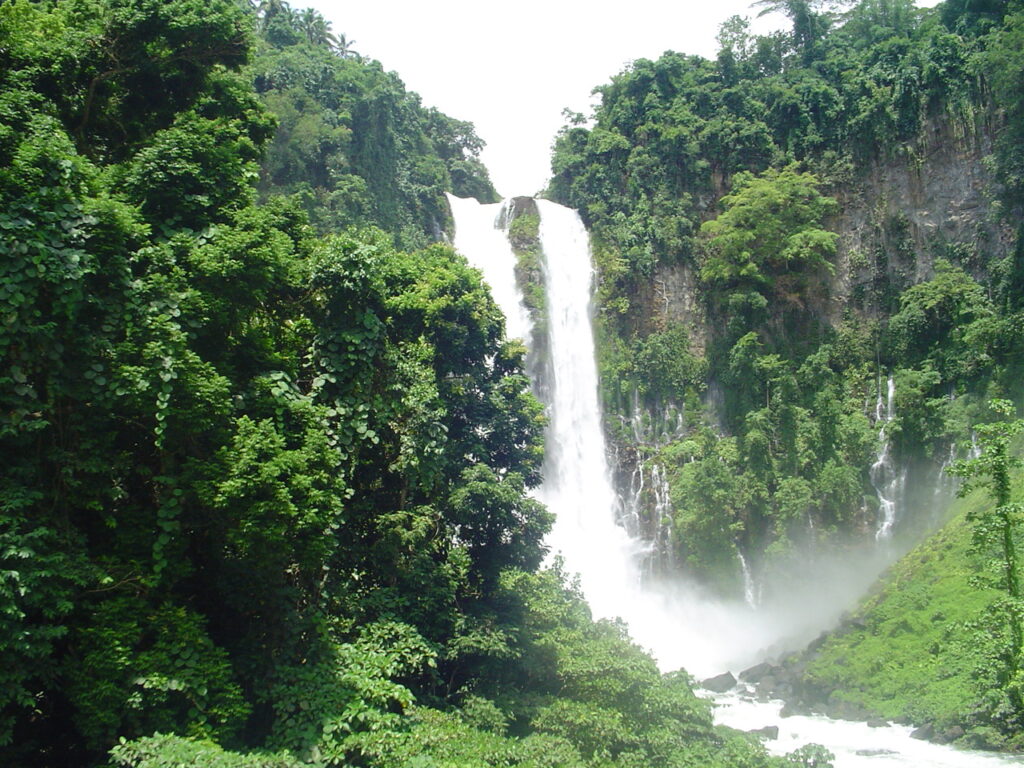Text and Photos by Henrylito D. Tacio
There are waterfalls and there are waterfalls. A waterfall is a point in a river or stream where water flows over a vertical drop or a series of steep drops. “Humans have had a distinct relationship with waterfalls for years, travelling to see them, exploring and naming them,” Wikipedia states.
Mindanao, the country’s second largest island (after Luzon), is home to several waterfalls. Take a closer look at some of them:
ALIWAGWAG FALLS
If you’re looking for the country’s highest waterfall, then you need to go to the remote area of Cateel where Aliwagwag Falls is located. Actually, it is a multi-tiered waterfall; it encompasses 84 steps ranging 6-10 feet and the combined height is 1,110 feet.
Aliwagwag Waterfalls is part of the Aliwagwag Protected Landscape, which was established in 2011 when then President Benigno Aquino III signed Proclamation No. 139. It is 24 kilometers away from the town proper.
The landscape is home to an important bird and biodiversity area in the Upper Cateel River Basin. When visiting the place, you get a glimpse of the tallest trees in the country, the Philippine rosewood (locally known toog). A rare species of fish called sawugnun by locals can be found on the upper portion of the waterfalls.
MARIA CRISTINA FALLS
Perhaps most Filipinos have heard of this waterfall of the Agus River. It is one of those tourist attractions in the country listed in the pages of the Sibika and Kultura books. Located in Iligan City, it stands 321.5 feet, making it the country’s second highest waterfall. Some people called it “twin falls”as the flow is separated by a rock at the brink of the waterfalls.
This grandeur waterfall has a strong current so much so that swimming is strictly prohibited. Visitors can still enjoy watching the cascading water from afar.
This treasured beauty in Northern Mindanao provides the power and electricity supply of Mindanao through the Agus VI Hydroelectric Plant. It is regulated by the National Power Corporation, which has developed the National Power Nature Park which connects to the waterfalls. This is where you can enjoy adventure sports like rock climbing and trekking.
SEVEN FALLS OF LAKE SEBU
Lake Sebu, the summer capital of South Cotabato, is one of the country’s most important watersheds. It is named after the biggest lake in the municipality. The outflows travel first to Lonon River and then to another lake (Siloton). From there, the water passes through the seven falls and ends in Allah River.
Visitors who come to the place call the waterfalls by its number: one to seven. But the locals of the area, T’bolis, have given names based on how they describe them: Hikong Alo (passage falls), Hikong Bente (immeasurable falls), Hiking B’Lebel (zigzag falls), Hikong Lowig (booth falls), Hikong K’Fo-I (wildflower falls), Hikong Ukol (short falls), and Hikong Tonok (soil falls).
Only the first two waterfalls are accessible. The first one is about 35 feet while the second falls is 70 feet tall. It’s the second waterfall that is a sight to behold. The droplets when hit by the sun creates a bright rainbow. If you go closer, your body gets somewhat wet due to the mists from the falling water.
TINUY-AN FALLS
If New York has the Niagara Falls, Bislig City has its Tinuy-an Falls. The multi-tiered falls are 95 meters wide and 180 feet high. It is located in barangay Burboanan, a one-hour ride from the heart of the city.
Wikipedia gives this apt description: “Tinuy-an Falls is a white water curtain that flows in three levels (with a fourth tier hidden from view). Every morning, the area shows a rainbow between 9 a.m. and 11 a.m. One may also ride a raft to get close to its cascades and get a water ‘massage.’”
Its name comes from the word “tinuyo-an,” a Bisayan word which means “intentional act or performance to attain an objective or goal.”
TUDAYA FALLS
Mount Apo is the country’s highest peak. It has several waterfalls, the tallest of which is the Tudaya Falls at 150 meters. It is located on sitio Tudaya of barangay Sibulan in Sta. Cruz, Davao del Sur. The waterfall flows into the Sibulan River, which goes to the Davao Gulf.
Although I am from Davao del Sur, I have never seen it personally. But one blogger wrote of it: “This single-tiered waterfall is definitely a most welcome oasis right in the middle of the thick bushes and huge towering ferns and cogon grasses amid a trail of sharp rock formations and stiff climb.”
The same blogger wrote further: “The welcoming icy mists of the waterfalls, as one enters the area, is as soothing as the serenity of the entire wonder with only the rapid rush of waters from high above blended with the musical chirping of wild birds hovering gently and the swaying sound of trees can be heard.” – (Additional photos from Wikipedia and Julius R. Paner)












